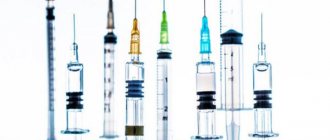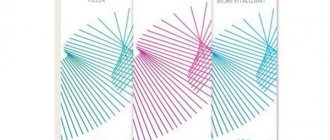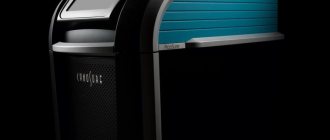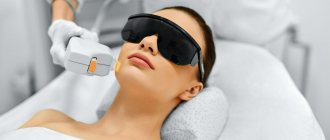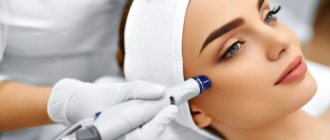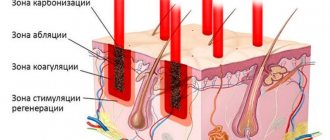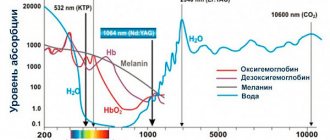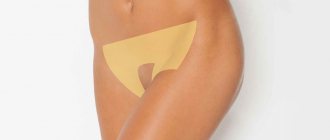Laser deep peeling can significantly rejuvenate facial skin and get rid of many surface defects. Laser peeling or facial resurfacing is carried out only in beauty salons by experienced specialists. The skin is exposed to a scattered laser beam. It can be erbium or carbon: carbon dioxide. The scattering method uses fractional and holistic rays.
The depth of laser penetration into the skin and the intensity of radiation are adjusted depending on the type of peeling: superficial, medium or deep. With deep peeling, the laser penetrates the tissue by 100-150 microns. The dermis and basement membrane of the skin are destroyed.
The beam evaporates the top layer of skin. The body begins to mobilize all its resources to restore it. Accelerated and enhanced cell division occurs. As a result, a layer of young, renewed skin appears. Deep peeling is recommended for patients if the skin shows clear signs of aging.
A little history
The history of the laser (an abbreviation for the English Light Amplification by Stimulated Emission of Radiation: amplification of light using induced (stimulated) radiation
) began in 1916, when Albert Einstein developed the theory of the interaction of radiation with matter. During his work, the great scientist suggested the possibility of creating quantum amplifiers of electromagnetic waves. Such an amplifier, designed by N. Basov and A. Prokhorov, enabled the physicist T. Meiman to create the first ruby laser in 1960, which served as an impetus for the development of laser medicine. Five years later, surgeon Leon Goldman removed the first tattoos with a similar laser. In 1983, American scientists Rox Anderson and John Parrish published their concept of selective photothermolysis in the journal Science, after which laser medicine and dermatology experienced a real revolution.
Table with points
| No. | Fractional laser model | Efficiency | Safety | Feelings (painful, painless) | Cost of procedures | Total points | Place in the ranking |
| 1. | SmartXide DOT | 4 | 3 | 3 | 3 | 13 | 10 |
| 2. | Palomar | 5 | 4 | 4 | 5 | 18 | 4 |
| 3. | Fraxel | 3 | 4 | 4 | 3 | 14 | 9 |
| 4. | Fotona | 4 | 4 | 4 | 4 | 16 | 7 |
| 5. | Asclepion Dermablate M31 | 3 | 4 | 5 | 2 | 15 | 8 |
| 6. | Fraxis co2 | 5 | 5 | 5 | 4 | 19 | 3 |
| 7. | Clear Brilliant | 5 | 5 | 5 | 4 | 19 | 2 |
| 8. | Mona Lisa Touch | 5 | 5 | 5 | 1 | 17 | 5 |
| 9. | Fraction co2 | 4 | 4 | 4 | 5 | 17 | 6 |
| 10. | Co2 Acupulse | 5 | 5 | 5 | 5 | 20 | 1 |
Operating principle
Laser equipment can be schematically represented in the form of three main elements: a pumping mechanism, a working fluid and an optical cavity.
The first element is the pumping mechanism
, or, in other words, the energy source that launches the laser working fluid. The source of laser radiation determines one of the most important characteristics of the laser - the wavelength of the radiation. There are a wide variety of lasers on the market today. Among them are erbium, neodymium, CO2 lasers, as well as diode, or, as they are also called, semiconductor lasers. They all have different pumping mechanisms.
The second element is considered to be the working fluid
, which determines the laser wavelength, narrow focus, monochrome and other properties of the device. The working medium for fractional lasers can be solids (crystals, alloys, semiconductors), liquids (dye solutions) or gases (CO2, halogens, gas mixtures).
| Working fluid | Examples |
| Solid-state lasers (crystals, glass) | Ruby crystals consisting of aluminum oxide interspersed with chromium atoms in the crystal lattice Neodymium YAG laser (Nd:YAG; Er:YAG) Laser on glass Er:Glass |
| Gas lasers | Carbon dioxide (CO2) Argon Copper vapor |
| Liquids | On inorganic or organic dyes |
| Semiconductor | Diode |
The third element is the optical resonator
.
The light wave, reflected from the mirrors (optical resonator
), returns to the active medium, exciting new atoms. According to this avalanche-like principle, the energy of the laser beam is amplified. Typically, a partially transparent mirror is used on one side to thereby ensure that the radiation exits into the light guide. Typically, more complex lasers use four or more mirrors. It is their quality and installation that largely determine the quality of the entire laser system.
Customer reviews:
Bisekov Salamat Khamitovich, chief physician of SM-Clinic: “In just 2.5 months, the clinic returned its costs, i.e. fully paid for the cost of the device. The laser really works and works great.”
IECTC 2016, St. Petersburg, VI International training course for cosmetologists on non-surgical rejuvenation methods.
June 3, 2016, report: “Treatment of aesthetic problems of the facial area. A combined approach of CO2 laser and gas-liquid skin treatment technology.” Darbanova E.M. – scientific director of Diona LLC
Advanced medical cosmetology of face and body. 2016 St. Petersburg.
October 22, 2016 Report: “The effectiveness of the synergy of CO2 laser and gas-liquid skin treatment apparatus in the correction of post-acne.” Darbanova E.M. – scientific director of Diona LLC
Choosing fractional lasers for a beauty salon
It is important to understand that laser radiation is subject to reflection, absorption and scattering phenomena. The action of each laser device is aimed at specific chromophores, which are biological structures with a strictly defined absorption spectrum.
Chromophores are substances of endogenous and exogenous origin that can absorb the energy of electromagnetic radiation (photons). Chromophores are found in both the epidermis and dermis.
Moreover, the absorption spectra of different chromophores differ radically. For laser action to be effective, it is necessary that the wavelength of the laser radiation coincides with the wavelength at the peak absorption capacity of the chromophore that we want to influence.
Graph 1. Dependence of absorption coefficient on wavelength
The penetration depth of laser radiation is also different for different skin chromophores (water, melanin, hemoglobin, oxyhemoglobin): it is inversely proportional to the absorption coefficient and depends on the wavelength.
Therefore, there cannot be a universal laser to solve all cosmetology problems (managers of cosmetology enterprises must clearly understand this). Before purchasing a laser device, you need to decide for what purpose it will be used.
In cosmetology, lasers with low (low-intensity laser radiation, abbreviated as LILI) and high power (high-intensity laser radiation, abbreviated as VILI) are used. LILI lasers have a power from 0.1 to 10 W/sq. cm and wavelength no more than 1300 nm. The power of VILI lasers is limited to 50–150 W/sq. cm, and the wavelength of such lasers can reach 10.6 microns.
Procedures using LILI are completely painless and comfortable for patients. The scope of application of this type of laser equipment (laser biorevitalization (mesotherapy), treatment of acne and post-acne, laser lipolysis, laser rejuvenation) is due to the fact that LILI activates cell membrane enzymes and stabilizes lipids.
VILI equipment has a much wider use in cosmetology. These are laser rejuvenation procedures, treatment of vascular pathology, removal of scars, scars, stretch marks (resurfacing), pigmentation, hair, neoplasms and tattoos, etc. The most popular are devices that allow solving pronounced age-related aesthetic problems (static wrinkles, scar deformities, age-related pigmentation , signs of pronounced photoaging), and among them, fractional lasers are obviously in the lead.
Laser rejuvenation: details
The AcuPulse laser rejuvenation technique (ablative CO2 laser resurfacing) is one of the most radical methods of skin rejuvenation, which treats all signs of aging. Wrinkles are eliminated, the skin is tightened, its texture improves, and pigment spots are removed. Skin rejuvenation (resurfacing), as well as the laser peeling procedure, is carried out using the AcuPulse device. However, for a pronounced anti-aging result, stronger parameters are used.
What is fractional laser? What makes it different?
A fractional laser differs from a conventional laser in that the laser beam is forcibly divided into many microbeams (“fractions”).
This can be implemented in hardware in several ways:
1) using microlenses installed in the handpiece (a large number of rays simultaneously hit the skin);
2) in scanner mode, when one laser beam sequentially perforates the skin;
3) using a roller attachment, which is controlled by laser pulses and allows the procedure to be carried out in motion.
This leads to the fact that the laser effect on a particular area of the skin becomes not total, but zonal: not the entire surface of the skin is exposed, but thousands of its micro-areas, between which there is unaffected tissue. Fractional lasers are less traumatic: at the time of tissue treatment, they do not cover the entire surface of the skin, but from 3 to 70 percent, depending on the laser settings, while triggering the recovery mechanism throughout the entire area.
In fact, it was thanks to the advent of fractional lasers that a new era of laser cosmetology began: laser procedures became less painful, safer (“delicate”), and the rehabilitation period after procedures was much shorter. At the same time, the clinical effectiveness did not decrease, but, on the contrary, increased.
The main physiological effects of using fractional photothermolysis are:
- smoothing wrinkles of various locations and depths;
- elimination of enlarged pores and structural changes in the epidermis;
- improvement and evenness of skin color and texture;
- elimination of pigment disorders (solar and senile lentigo, melasma);
- reconstruction of the dermis by streamlining the structure of elastic collagen fibers.
Among the variety of fractional laser equipment, experts usually distinguish two main types of devices: for non-ablative
and
ablative
method for solving aesthetic problems.
Rehabilitation and care after the procedure
The rehabilitation period takes 4-5 days. Immediately after the procedure, the skin may be red, itchy, flaky, and unattractive. Therefore, it is advisable to cancel important tasks in the coming days after the session and spend them at home, resting. But it is worth keeping in mind that all the consequences of the procedure completely disappear only after about 2 weeks.
Skin care after the procedure plays an important role in the results obtained after a fractional laser. If you want her to look good, you should pay special attention to her in the first days after the procedure. It is necessary to ensure an optimal level of moisture. After the procedure, the doctor will give recommendations regarding moisturizing medications that will need to be used after the procedure.
It is important to remember that in the first days after the session you should avoid sunlight, as it can have a destructive effect on new cells and cause skin discoloration. You should also not take a hot bath, visit a sauna, swimming pool, swim in open water, or deliberately sunbathe during the first month.
Another rule of post-treatment care is to allow the skin to recover at its own pace. You should not deliberately increase the peeling of the skin or tear off the flaky areas - this can lead to a completely opposite effect than expected.
NON-ABLATIVE LASERS
With non-ablative laser treatment, the beam acts on the deep layers of the skin, heating the water up to 100 degrees, without damaging the stratum corneum of the epidermis, which results in a reduction in collagen fibers of the dermis, stimulation of neocollagenogenesis and, as a result, improvement in skin color and texture, smoothing out wrinkles and general facelift. Due to the fact that it is impossible to increase the depth of microthermal zones (MTZ) in non-ablative fractional lasers in such a way that this does not lead to an increase in their diameter, laser systems began to be designed with adjustment of this parameter. In many laser devices, the diameter of the microbeam is adjustable from 70 to 250 microns.
According to the degree of beam penetration, non-ablative fractional photothermolysis can be divided into superficial
and
deep
.
The main advantage of surface non-ablative photothermolysis
is the possibility of forming microzones only on the surface of the skin without affecting the reticular layer of the dermis. This allows you to cover a fairly large percentage of coverage (40%, maximum 70%) with a high level of safety of the procedure and quick recovery. The disadvantages of the method include the fact that working only at the level of the epidermis does not make it possible to solve “dermal” problems: deep wrinkles, scars, the consequences of acne, since solving these problems requires deep heating of the tissues.
Deep non-ablative photothermolysis
Today it is one of the most popular procedures in hardware cosmetology. First of all, it is effective in smoothing the skin texture: smoothing out wrinkles, scars, compacting and tightening tissue. At the same time, the rehabilitation period is quick and painless, since the damage is hardly noticeable. However, due to the fact that the formation of coagulation microzones occurs at the level of the mesh layer, this does not allow achieving a large percentage of coverage. Therefore, to achieve the desired effect, the patient needs to undergo 3-5 sessions.
Non-ablative fractional lasers include:
erbium lasers Er:glass 1550 nm, Er:glass 1440 nm.
Today, erbium lasers are actively used when working with the most sensitive areas: neck and décolleté, paraorbital and perioral areas;
Nd:YAG lasers with a wavelength of 1064 nm.
With long-pulse exposure, they “work” in the dermis at a depth of up to 5 mm, triggering the process of formation of young fibroblasts and neocollagenesis due to partial coagulation of the microvascular bed and partial denaturation of the collagen structure. Nd:YAG with a microsecond pulse has a targeted effect on the melanin pigment and small blood vessels, which is aimed at reducing erythema and stimulating collagen synthesis without damaging surrounding tissues;
thulium lasers Tm:fiber 1927 nm.
Appeared relatively recently. They allow you to solve hyperpigmentation problems in a record-breaking number of procedures. The thulium laser heats the epidermis without ablation; there is no visible damage to the skin surface;
diode lasers with a wavelength of 810/980 nm.
The main advantage of a diode laser is the high quality of radiation, both in terms of monochromaticity and in terms of beam focusing and divergence. In this case, the light energy of the beam affects individual components of the dermis without damaging the epidermis. Non-ablative rejuvenation with a diode laser includes the elimination of secondary signs of aging: superficial pigmentation, telangiectasia, rosacea. The laser can also be used in complex therapy for the treatment of acne.
Prices
Laser peeling. Service code: A22.01.002
| Description of service | Cost of service, rub. |
| One procedure | 10000 |
Laser resurfacing of post-acne. Service code: A22.01.002
| Description of service | Cost of service, rub. |
| Face | 15000 |
| Cheeks/neck | 10000 |
| Forehead | 7000 |
Laser resurfacing rejuvenation. Service code: A22.01.002
Description of service Cost of service, rub. Face 15,000 Face with eye area 20,000 Circular laser blepharoplasty 12,000 Laser blepharoplasty (upper/lower eyelids) 7,000 Perioral zone 5,000Laser resurfacing of scars. Service code: A22.01.002
| Description of service | Cost of service, rub. |
| 1 sq. cm | 1000 |
ABLATIVE LASERS
Ablative lasers heat water in the skin to a temperature of 300 degrees, thereby causing instantaneous evaporation of the tissue. At the place where the microbeam of the ablative fractional laser penetrated the skin, a microhole remains - the ablation microzone.
Surface ablative photothermolysis
makes it possible to destroy a fairly large percentage of tissue in one procedure. And therefore, most often cosmetologists resort to this method to solve problems localized at the level of the epidermis: pigment disorders, including melasma, uneven skin texture and color, actinic keratosis.
Deep ablative photothermolysis,
in turn, in a short period of procedures ensures leveling of the relief. During laser treatment, up to 20 g of skin is removed, collagen around microzones is reduced, which creates an instant lifting effect. This technique is intended to smooth out the relief and texture of the skin, smooth out wrinkles and scars, and eliminate the effects of acne. In other words, the method solves “dermal” problems.
Ablative fractional lasers include:
erbium lasers Er:YSGG 2790 nm and Er:YAG 2790 nm
(yttrium aluminum garnet - YAG, glass - Glass). They are able to remove a layer of the epidermis about 30 microns thick, causing it to exfoliate, thereby improving the condition of the skin with superficial hyperpigmentation. They also give a good effect when removing scars and stretch marks;
CO2 lasers – wavelength 10,600 nm.
They use a mixture of carbon dioxide (CO2), helium (He) and nitrogen (N2) as a working medium. Currently, CO2 lasers use metal rather than glass tubes with high-frequency (RF) pumping technology, which produces a thinner laser beam. When carrying out the fractional rejuvenation procedure with a CO2 laser, microzones of the skin are removed almost throughout the entire depth of the epidermis (up to 20 microns), while the zone of thermal damage extends into the dermis by 150 microns or more, causing collagen coagulation. This leads to the desired effect (reduction of denatured collagen fibers, smoothing of the skin). Today on the market there are a number of fractional carbon dioxide CO2 devices with adjustable flux density and pulse duration, allowing you to choose the temperature and depth of heating of the dermis. This improvement in technology has reduced post-procedural recovery time and the risk of side effects such as scarring and transient hypopigmentation, previously present after the use of all types of lasers, not just CO2.
Thanks to the development of technology, today it is possible to use ablative and non-ablative lasers comprehensively to achieve greater clinical effect (so-called layer-by-layer laser rejuvenation). For example, an interesting clinical effect is achieved by combining erbium (Er:YAG) and neodymium (Nd:YAG) lasers in laser systems. One of the requirements is variable pulse time while maintaining high energy values, with the duration of one pulse varying for Er:YAG from 100 μs to 2500 μs, and for Nd:YAG from 5 ms to 200 ms.
Pulse duration, or pulse width,
– a quantity that reflects the length of the laser pulse over time, that is, the time during which the laser actually emits energy. Measured in nano-, micro- or milliseconds. Ultrashort pulses make it possible to achieve “cold” tissue ablation, that is, tissue evaporation without thermal damage to the underlying layers. While ultra-long pulses make it possible to achieve deep, intense heating of tissues with partial destruction of protein.
Indications for use:
Fractional laser mode:
- rejuvenation/lifting;
- wrinkles around the eyes, around the mouth;
- removal of stretch marks, scars, scars, including acne;
- reduction of skin flap, narrowing of enlarged pores;
- elimination of manifestations of chrono- and photo-aging of the skin;
- removal of pigmentation.
Surgical laser mode:
- skin (condidomas, plantar warts, periungual warts, epithelial dysplasia, benign skin neoplasms, basal cells, hypertrophic scars, keloids;
- face and oral cavity (neoplasms on the tongue, tonsils);
- upper and lower respiratory tract;
- gynecology;
- urology;
- proctology;
- blepharoplasty (eyelid surgery);
- surgeries to treat snoring.
Nozzle for non-surgical vaginal rejuvenation (sold separately)
Non-surgical vaginal rejuvenation with CO2 laser is a series of innovative, painless solutions aimed at vaginal relaxation, restoration of sensitivity, and improvement of muscle tone.
Which fractional lasers to buy for a beauty salon?
The main technical parameters that distinguish fractional lasers are: power, wavelength, percentage of coverage. Most often, radiation power is determined in watts or joules. You can determine whether equipment belongs to VILI using the hazard class of laser equipment. This is stated in the documents of the State Standard of the Russian Federation GOST R IEC 60825-1-2009 “Safety of Laser Equipment” and SanPiN 2.1.3.2630-10 “Sanitary and Epidemiological Requirements for Organizations Carrying Out Medical Activities”. According to the laser safety standard, devices are divided into 7 classes in ascending order: 1, 1M, 2, 2M, 3R, 3B and 4. Manufacturers usually write information about laser safety on the body of the device. It is known that all CO2 lasers belong to class 4, and any laser capable of burning tissue has a class of at least 3B.
The second important characteristic of fractional lasers is wavelength. The maximum wavelength of fractional lasers is: 10,600 nm (CO2 lasers), 1550 nm, 2940 nm (erbium lasers), 1064 nm (neodymium lasers). Diode lasers can be designed at any wavelength. But each procedure has its own optimal indicators.
Wavelength is the physical distance between the peaks of successive waves in a laser beam. Wavelength is measured in nanometers (10-9 meters, nm) or micrometers (10-6 meters, or 10-3 millimeters, microns). One nanometer is equal to 0.001 micrometer.
The third characteristic is the percentage of coverage, that is, the sum of the areas of all photothermolysis or ablation microzones divided by the area on which they are formed. This most important parameter determines not only the effectiveness, but also the safety of the procedure. The percentage of coverage largely depends on the type of radiation and working attachments.
The basic package of fractional lasers includes: a system unit with a certain type of laser and installed modules, a mirror manipulator (it is worth noting that many non-ablative fractional lasers use flexible optical fiber instead of a mirror manipulator; its advantage is that it is much lighter and thinner, but there is the risk of frequent breakdowns, and its replacement can be expensive; the articulated arm is more durable to use, but less convenient due to the need for adjustment and calibration), a nozzle with an adjustable focal length and a built-in ablation product evacuation system, safety glasses, user manual (in Russian language) and instruction manual (in Russian).
Approximate calculation of the payback of the device:
| Average price of service in Moscow | 15,000 rub. |
| Maximum salary for a cosmetologist is 20% of revenue | 3,000 rub. |
| Consumables | 50 rub |
| Weighted average income from 1 service | RUB 11,950 |
| Working day | 12 o'clock |
| Max. number of procedures | 8 |
| Actual number of clients/day | 2 people |
| Working days per month | 30 |
| Revenue for 1 day | RUB 23,900 |
| Revenue for 1 month | RUB 717,000 |
| Return on investment period | on day 50 |
Net profit for the year: RUB 11,950. * 2 clients * 268 days = 5,903,300 rub.

